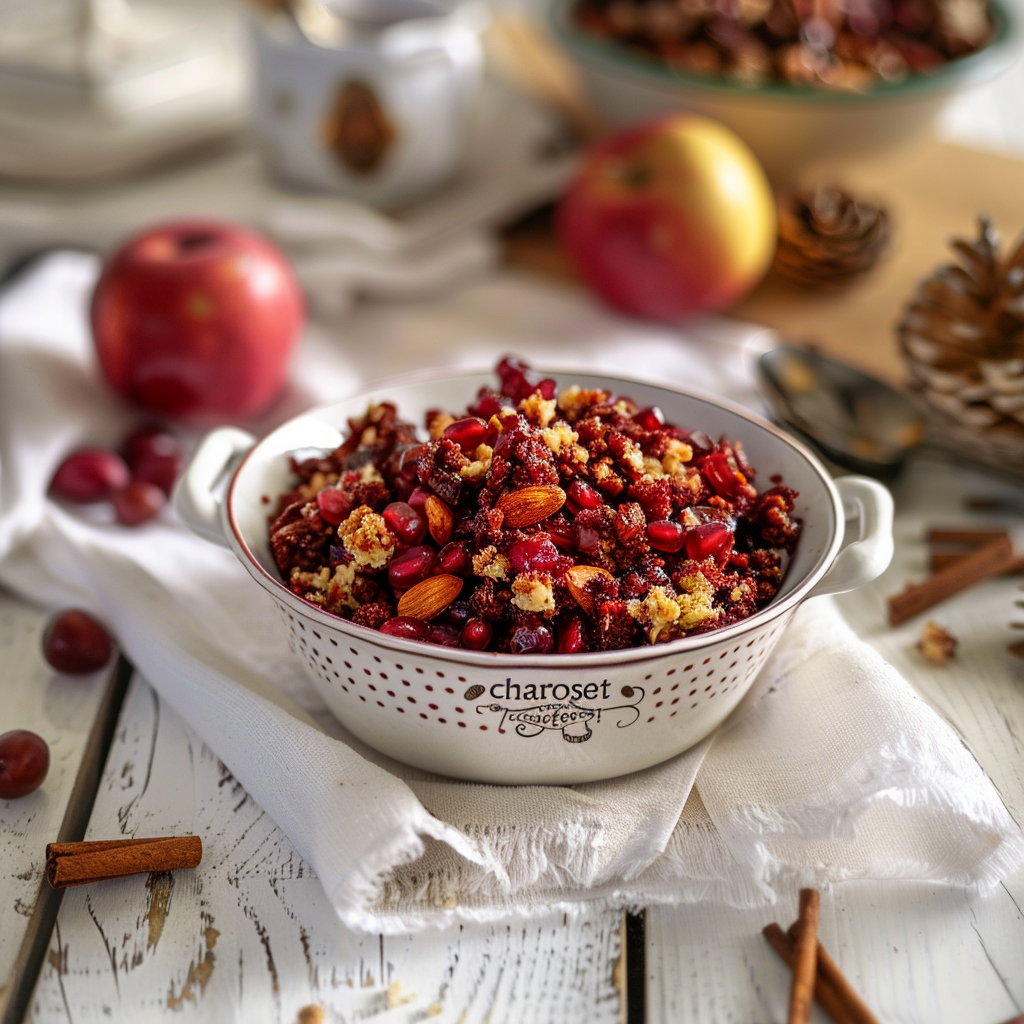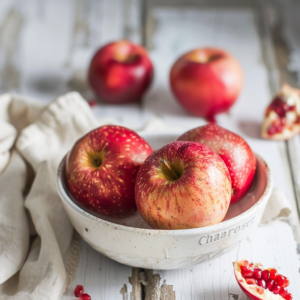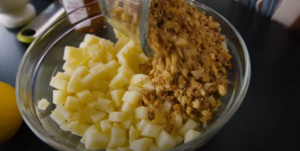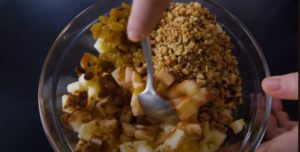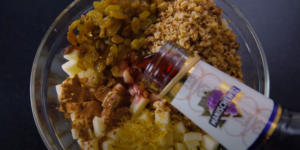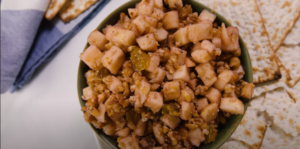Hey, Welcome back to Beyond the Bayou Blog. Today, I’m excited to share with you my journey with Charoset, a dish that holds a special place in my heart. Growing up, Passover was always a cherished time for my family. The house buzzed with activity as we prepared for the Seder night, and one of my favorite parts was making charoset with my Mother. She’d stand at the kitchen counter, chopping apples and nuts with skillful hands, while I eagerly helped mix in the sweet wine and cinnamon. As we worked together, she’d share stories of our family’s traditions, passed down from generation to generation.
Now, as an adult, I carry on the tradition in my own home, making this with loved ones and sharing the stories that make it so meaningful. Join me on this culinary journey as we explore different variations of charoset and celebrate the rich tapestry of tradition and flavours that make Passover so special. If you are one of them who likes Apple recipes you have to try Apple Crumb Cake and Whiskey Apple Cider Punch. Let’s get cooking.
What is Charoset?
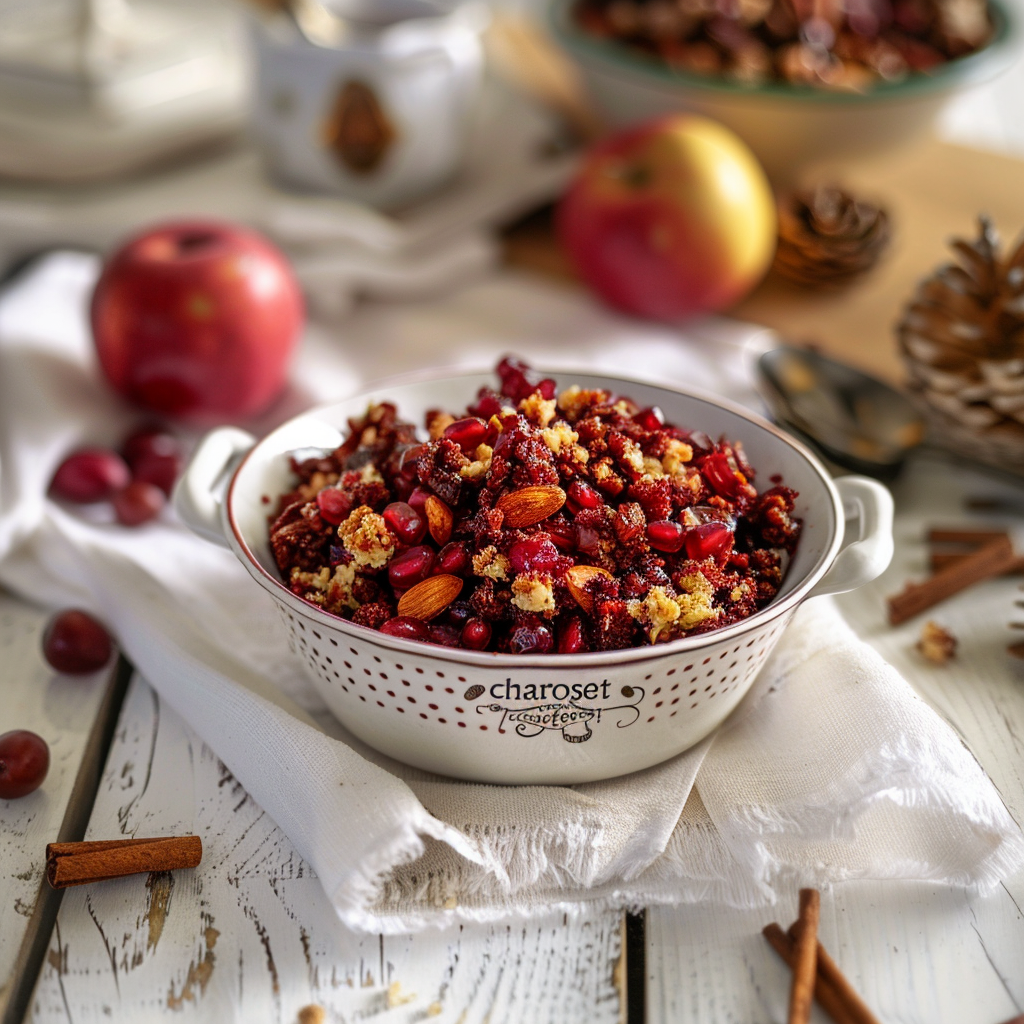
Charoset is a delicious mixture of fruits, nuts, and sweet spices that Jewish people eat during Passover. It’s a symbol of the mortar used by Hebrew slaves in ancient Egypt. Making it is like creating a special recipe that connects to history and tradition. People make it in different ways, depending on their family’s customs and where they come from.
Some use chopped apples, nuts like walnuts or almonds, sweet wine or grape juice, and spices like cinnamon. Others might add ingredients like dates, figs, or honey to make it sweeter or give it a different flavor. It’s a tasty reminder of the sweetness of freedom and a way to honor the past while celebrating with loved ones during the holiday.
How to make Charoset?
step 1: Prepare the Apples: Wash the apples thoroughly and then peel them using a vegetable peeler or a knife. After peeling, slice the apples into quarters and remove the cores. Then finely chop the apples into small, uniform pieces. A food processor can also be used to achieve the desired consistency.
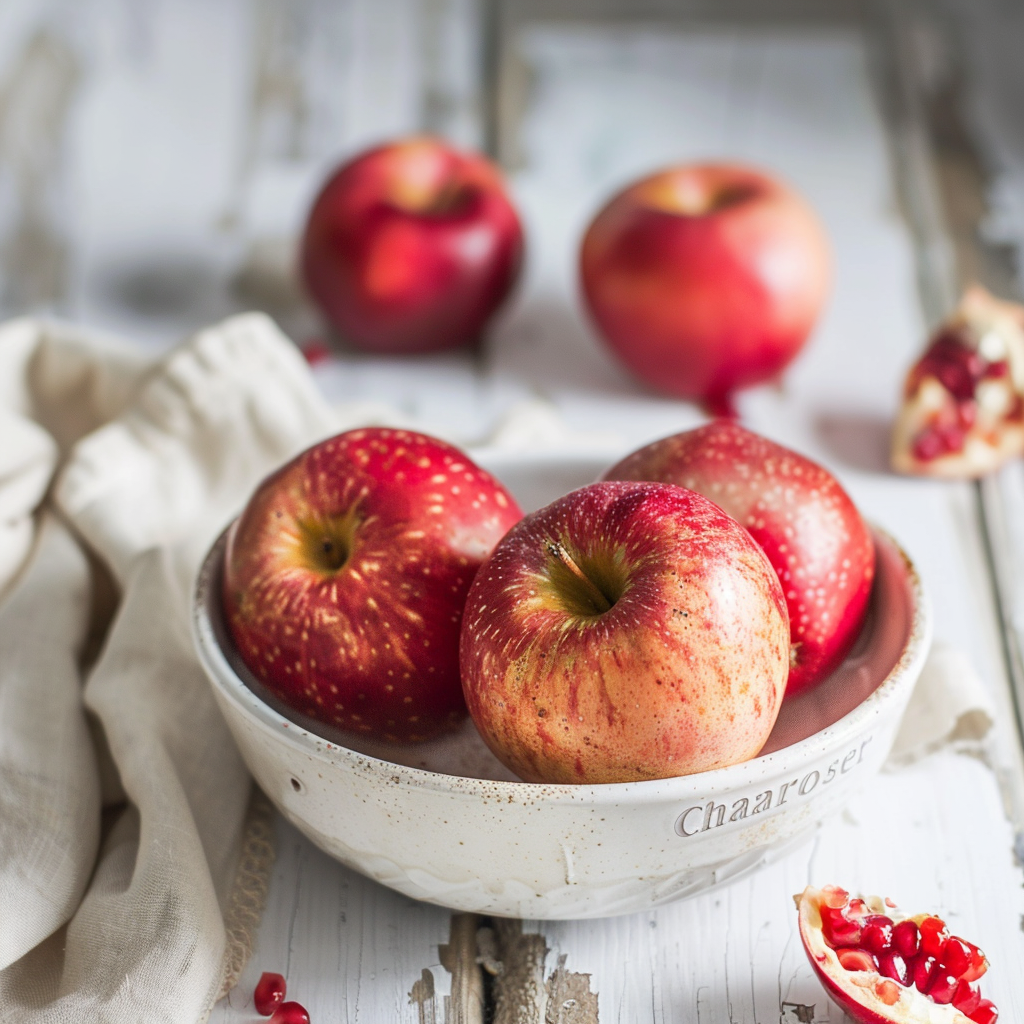
Step 2: Prepare the Nuts: Measure out the nuts (such as walnuts or almonds) and chop them finely. You can use a knife or a food processor to chop the nuts. Be careful not to over-process them, as you want small but distinct pieces of nuts in the charoset.
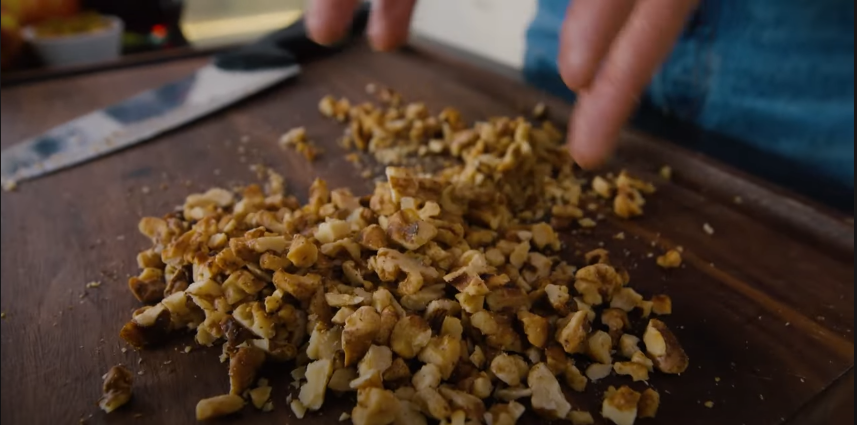
step 3: Combine Apples and Nuts: In a mixing bowl, add the chopped apples and nuts. Make sure the bowl is large enough to accommodate all the ingredients and allow room for mixing.
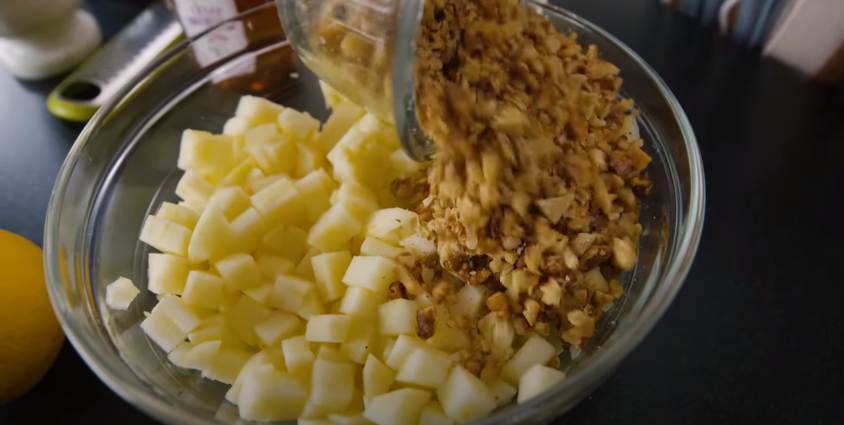
step 4: Pour in Sweet Wine or Grape Juice: Measure out the sweet red wine or grape juice and pour it over the mixture in the bowl. This liquid will help bind the ingredients together and add sweetness to the charoset.
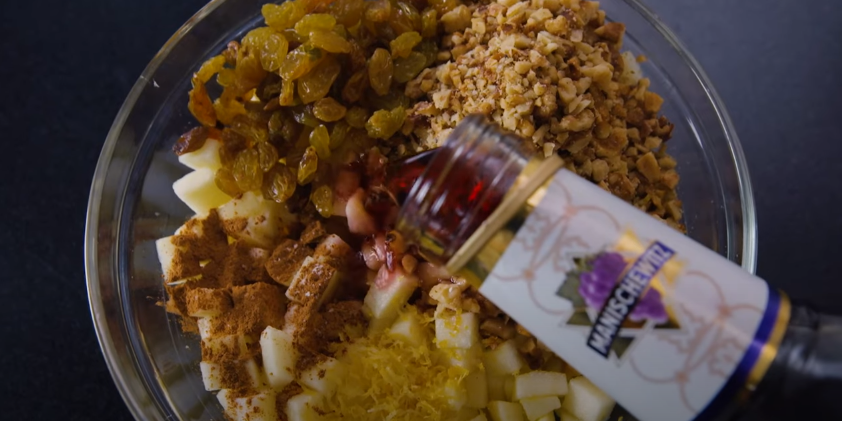
Step 5: Mix Thoroughly: Use a spoon or spatula to mix all the ingredients together until they are well combined. Make sure the cinnamon, wine or juice, and honey (if using) are evenly distributed throughout the mixture.
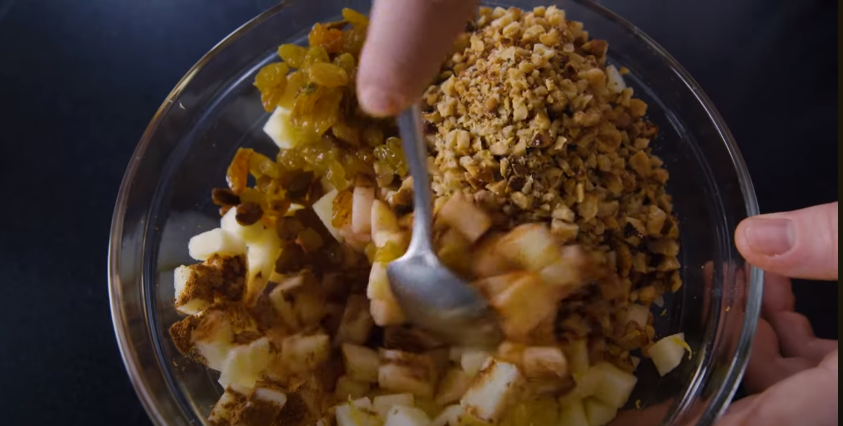
Step 6: Chill in Refrigerator: Cover the mixing bowl with plastic wrap or a lid and place it in the refrigerator. Let the charoset chill for at least 30 minutes before serving. Chilling allows the flavors to meld together and enhances the overall taste of the charoset.
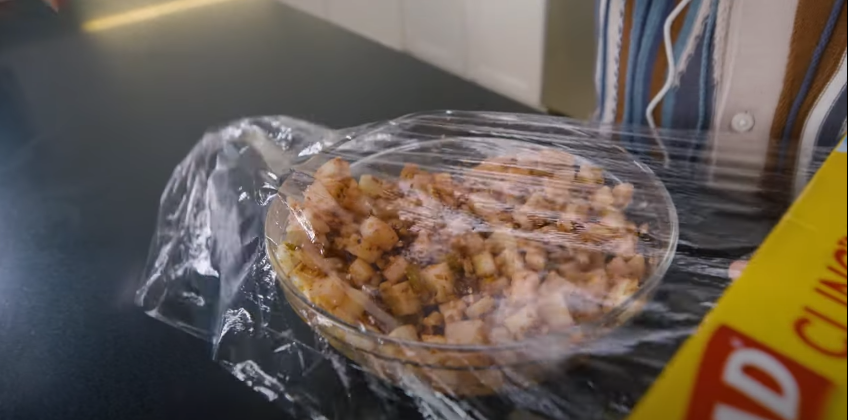
step 7: Serve and Enjoy: Once chilled, transfer the charoset to a serving dish and serve alongside matzo during your Passover Seder. Enjoy the delicious flavors and symbolic significance of this traditional dish with family and friends.
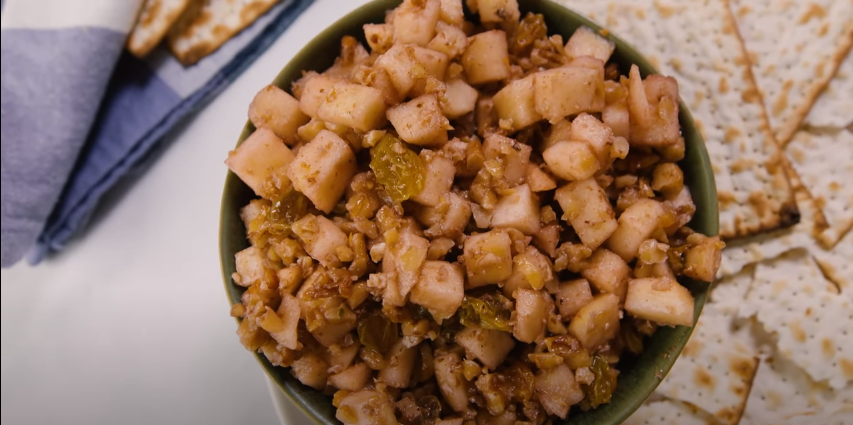
Charoset Recipe
Equipment
- Knife
- Mixing Bowl
- Measuring Spoons
- Spoon or spatula for mixing
- Plastic Wrap
- Refrigerator for chilling the charoset
Ingredients
- 2 medium-sized apples peeled and finely chopped
- 1 cup chopped nuts such as walnuts or almonds
- 1 tbps ground cinnamon
- 4 tbps sweet red wine or grape juice
- 1 tbps honey optional, for extra sweetness
- Pinch of salt optional
Instructions
- Start by peeling and finely chopping the apples. You can use a knife or a food processor for this step.
- In a mixing bowl, combine the chopped apples and nuts.
- Add the ground cinnamon to the bowl and mix everything together.
- Pour in the sweet red wine or grape juice. If you prefer a sweeter charoset, you can also add a tablespoon of honey at this stage.
- Mix everything well until the ingredients are evenly distributed.
- Once everything is mixed to your liking, cover the bowl and let the charoset chill in the refrigerator for at least 30 minutes before serving.
- Serve the charoset alongside matzo during your Passover Seder, and enjoy the delicious flavors and symbolism of this traditional dish.
Notes
Nutrition
The Meaning of Charoset for Passover Seder!
Charoset is traditionally served as part of the Passover Seder. Seder means ?order? in Hebrew, referring to the specific order in which we perform the rituals and readings of the Passover meal.
When it comes time to enjoy the charoset, it?s eaten spread on matzo by itself, or sandwiched between two pieces of matzo along with a layer of horseradish. That?s the classic Hillel Sandwich (it originally contained lamb, too, but in modern times we just include horseradish and charoset).
Charoset on matzo is meant to symbolize the mortar between the stones of the pyramids in Egypt.
Choose Best Dates!
When buying dates, look for fresh ones?they should be dark brown, soft, and heavy for their size. If you are only able to find drier dates, you can soften them by letting them soak for five minutes in hot water. Drain the dates before proceeding with the recipe.
Try Eating Apple Walnut Charoset In this Way!
Since it’s such a sweet dish, you can eat charoset plain with a spoon if you want…my kids love it that way! They also dip their matzo crackers in it, which I personally love as well.
It?s traditionally eaten in combination with bitter herbs as a reminder of the bitterness of the Jews’ experience as enslaved Israelites. The bitterness of the herbs is reduced when dipped in the sweet charoset.
Charoset Without Nuts!
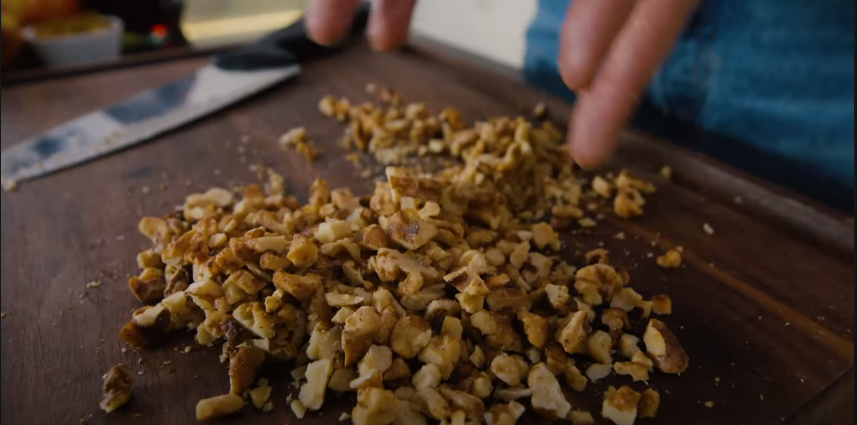
I have a good family friend that does not like nuts in her charoset. So we just leave them out. The charoset will still taste delicious and have the same symbolic impact. If you want to substitute another ingredient for the nuts, you could add golden raisins or dates for a textural difference from the apples.
Best Apples to Use In Charoset!
?I never use the same apple combination twice, however I do like to use a mix of sweet apples and tart apples. I look for a firm apple that will hold up to the nuts and not fall apart while mixed with the wine. Normally I have pink lady, gala, sweet tango, and honey crisp in the fridge and the mix of them works well. The two apples I stay away from using are the red delicious and the granny smith.
Is charoset only eaten during Passover?
While charoset is most commonly associated with Passover, it can certainly be enjoyed at other times of the year as well. Its delicious flavors make it a versatile dish that can be enjoyed as a snack, dessert, or topping for various foods.
Can I customize the ingredients in charoset?
Yes, Charoset recipes vary widely depending on regional and family traditions. Feel free to experiment with different fruits, nuts, spices, and sweeteners to create a charoset that suits your taste preferences.
Wanna Try more Variations of Charoset!
- Ashkenazi (Eastern European):
- Includes chopped apples, walnuts, sweet red wine, cinnamon, and sometimes honey.
- Sephardic (Mediterranean and Middle Eastern):
- Features ingredients such as dates, figs, almonds, raisins, sweet wine, spices like cinnamon, cloves, and sometimes orange blossom water or pomegranate seeds.
- Mizrachi (North African and Middle Eastern):
- Incorporates ingredients like dates, figs, raisins, almonds, pistachios, spices such as cinnamon, cardamom, nutmeg, sesame seeds, or tahini.
- Modern Variations:
- Some modern variations of this may include ingredients like cranberries, apricots, pecans, pine nuts, or even exotic fruits like mango or pineapple. These variations often reflect personal taste preferences or attempts to incorporate local ingredients.
- Nut-Free:
- For individuals with nut allergies, charoset can be made without nuts. In such cases, additional dried fruits like raisins, dates, or figs can provide texture and sweetness.
- Vegan or Gluten-Free Charoset:
- Charoset can easily be made vegan or gluten-free by ensuring that all ingredients used adhere to these dietary requirements. Using gluten-free matzo or omitting it altogether can make the dish gluten-free, while substituting honey with a vegan alternative like maple syrup can make it vegan-friendly. if we talked about the good part of this dish it gonna be that one part of our day it could be our that feel of being good at everything so if you are one of them who likes
What to do with Leftover?
- Spread it on Toast: Use leftover as a delicious spread on toast or crackers for a quick and satisfying snack or breakfast.
- Top Yogurt or Oatmeal: Add a dollop of to plain yogurt or oatmeal for a sweet and fruity twist. It adds a burst of flavor and texture to your morning meal.
- Mix into Salads: Incorporate into salads for an unexpected burst of sweetness and crunch. It pairs well with greens like spinach or kale, as well as savory ingredients like grilled chicken or goat cheese.
- Stuff into Baked Goods: Use leftover as a filling for pastries or baked goods. It adds a deliciously sweet and fruity flavor to recipes like turnovers, rugelach, or stuffed challah.
- Blend into Smoothies: Blend leftover into smoothies for a nutritious and flavorful boost. Combined with fruits like bananas, berries, or spinach, it creates a refreshing and satisfying drink.
- Mix into Cottage Cheese or Ricotta: Stir leftover into cottage cheese or ricotta for a quick and easy snack or dessert. The creamy texture of the cheese pairs perfectly with the sweet and nutty flavors of it.

